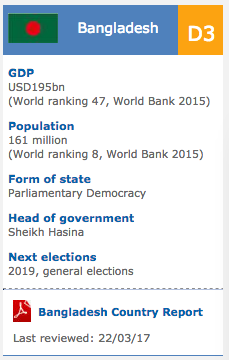Gambia: Gambia Agriculture Profile
2012/03/12
FOOD SECURITY SNAPSHOT
- Good 2013 cereal harvest estimated
- Access to food continues to be constrained by high food prices
- Humanitarian assistance continues to be needed
Good 2013 cereal harvests
Harvesting of the 2013 cereal crops was completed in November. Favourable climatic conditions in the main cereal growing regions benefited crops during the growing period: as a result, aggregate 2013 cereal production has been estimated to have increased by about 5 percent to 229 000 tonnes compared to 2012.
Access to food constrained by high food prices
The Gambia, in a normal year, relies on imports for nearly half of its cereal consumption requirements (mostly rice and wheat) and domestic cereal prices are strongly affected by world prices and the exchange rate of the Dalasi (GMD), the national currency. The Dalasi has depreciated significantly over the past few years, which combined with high international commodity prices, has put an upward pressure on domestic prices of imported food commodities.
A satisfactory food supply situation is expected during the 2013/14 marketing year (November/October), following the improved domestic harvest position and the favourable trends in international food exports markets. However domestic prices of imported cereals have remained relatively high, reflecting the continued depreciation of the Dalasi. Access to food continues to be difficult for several segments of the population.
Continued assistance is still needed, especially for vulnerable people
The combined effects of the 2012 Sahel Crisis and localized heavy flooding in 2012 and 2013 have eroded vulnerable households’ coping mechanisms and resulted in protracted food insecurity in pockets of the country and persisting acute malnutrition.
Despite a recovery in cereal production in 2012 and 2013, access to food continues to be constrained by high food prices and the lingering effects of the Sahel food crisis. About 285 000 people are estimated to be at risk of food insecurity. Child malnutrition is also a cause of concern: chronic malnutrition ranges between 13.9 and 30.7 percent with North Bank Region and Central River Region surpassing the ’critical’ threshold of 30 percent.
The United Nations and humanitarian partners recently launched a three‑year Regional Strategic Response Plan (RSRP) to provide aid to millions of people in nine countries of the Sahel belt. The country plan for the Gambia is seeking to mobilise USD 26 million to provide food and non‑food assitance to over 345 000 people accross the country.
- Gambia News
-
- AFGHANISTAN: UNWTO: International tourism – strongest half-year results since 2010
- BOTSWANA: Why governments need to support the financial sector to meet the unserved needs of smallholder farmers
- BOTSWANA: International Arrivals To Africa Reach More Than 18 Million In 2017
- BOTSWANA: Africa: USA-Africa - No Policy? Bad Policy? or Both?
- BOTSWANA: Africa: U.S. State Department To Get Experienced Diplomat in Key Africa Post
- BOTSWANA: Africa’s economic growth in 2016 was driven by East Africa
- Trending Articles
-
- ANGOLA: Angola: Elections / 2017 - Provisional Data Point Out Qualified Majority for MPLA
- WORLD: How fair is our food? Big companies take reins on sourcing schemes
- BOTSWANA: Bill Gates sees US likely to maintain aid levels for Africa
- EUROPEAN UNION: UK seeks to 'align' with EU on data protection rules
- BAHRAIN: Bahrain issues new rules to encourage fintech growth
- UNITED STATES: GE shifts strategy, financial targets for digital business after missteps







.gif?1356023993)



